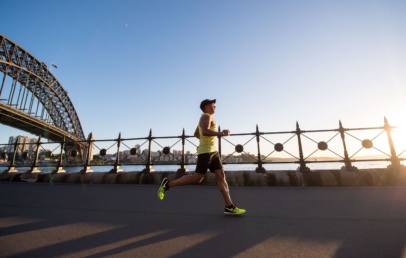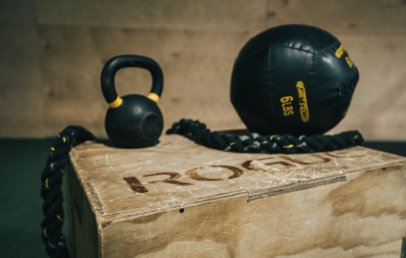
Put a spring in your step.
Did you ever play Leapfrog on the playground growing up? How about skipping around? Or jumping from perch-to-perch? Kids sure are bouncy, aren’t they? But here’s something you may not have known about: all that bouncing, skipping, jumping? It’s actually a really great way to build muscle! Welcome to the wonderful world of plyometrics.
Plyometrics, or just “plyo,” if you prefer, is colloquially known as “jump training.” An apt name, as the act of jumping and bouncing is central to plyo exercise. Plyo is all about building explosive strength in the legs. By rapidly repeating quick squatting hops, the muscles in your legs are forced to stretch out. This stretching, in turn, increases your legs’ elasticity and makes subsequent jumps more powerful, kind of like a frog’s legs. A few minutes of this high-impact stretching and contracting, and your legs will become like some kind of super-strength rubber. In addition to your legs, plyo will really tighten up your glutes; all the shock-absorption from those hops has to go somewhere, after all. Plyo won’t help your arms on its own, but if you add in some medicine ball throws, you can get a good arm burn going as well.
Despite the simplicity of the exercise, though, plyo is not for beginners. Rapid hopping sounds easy, but after a single, short session, you’re going to want to take a break, because this stuff hits hard. Just getting started requires a particular level of strength and lung capacity; if you’re not already in shape, it might not be a good idea to start with plyo. Plyo is also not recommended for those with joint conditions like arthritis. If you’re not flexible enough, there is a real chance you’ll hurt yourself, so play it safe.
If you meet the prerequisites and want to firm up those legs, then start hopping. You’ll be like Toad from X-Men, but less disgusting.




